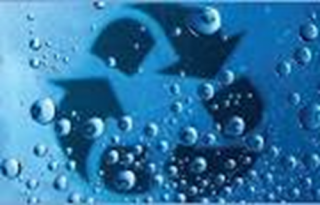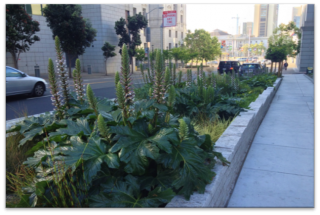Alternative Water Sources Research
- Introduction to EPA Research on Water Reuse
- Informing Fit-for-Purpose Water Reuse
- Water Treatment and Characterization
- Community Decisions on Water Reuse
- Related Research and Resources

EPA is researching new and existing alternative water source practices as a way to meet the growing demand for sufficient quantities of high-quality water and to address water scarcity. These opportunities include limiting discharges from wastewater treatment; identifying alternative water sources; recovering water resources; developing methods to enhance the availability and quality of recycled water; and creating tools that aid decision-making for fit-for-purpose water reuse.
Introduction to EPA Research on Water Reuse
What is water reuse?
Water reuse (also commonly known as water recycling or water reclamation) reclaims water from a variety of sources then treats and reuses it for beneficial purposes.
EPA published the Guidelines for Water Reuse in 2012 as a general reference for water reuse practices, and the Potable Reuse Compendium in 2017 to inform current practices in the rapidly developing area of direct potable reuse. EPA’s research aims to advance the scientific understanding of water reuse to improve the quantity of high-quality water without creating other significant environmental impacts.
EPA research focuses on potable and non-potable fit-for-purpose water reuse for small, decentralized systems in multiple areas. These general research areas explore testing treatments on alternative water sources; creating operational water reuse practices; and developing tools to inform community decisions.
Specific research focuses are outlined in the following sections.
Risk Characterization to Inform Fit-for-Purpose Water Use
One area to supplement water resources that requires more research is defining treatment requirements for the safe use of alternative waters for a variety of end uses based on fit-for-purpose risk characterization.
What are fit-for-purpose uses?
In the context of this webpage, fit-for-purpose specifications are the treatment requirements needed to bring water from a particular source to the quality standard to ensure public health, environmental protection, or specific user needs.
Research Focus
- Developing effects-based, computational toxicological, and non-targeted analysis (NTA) methods to assess complex chemical mixtures in alternative sources of water (such as industrial wastewaters).
- Reducing uncertainty in microbial and chemical contaminant levels in atmospheric water collections, such as stormwater and roof-collected rainwater, to support the development of appropriate treatment and management guidance for their fit-for-purpose use.
- Assessing risk-based, fit-for-purpose treatment targets across a variety of alternative sources (such as wastewater, graywater, atmospheric waters) and end-use applications (potable and non-potable).
- Understanding various aspects of enhanced aquifer recharge, including subsurface hydrogeology, risks to water quality, and the effects of recharge events.
Facilitating the Implementation of Alternative Water Use Through Improved Treatment Characterization and Monitoring
To prepare for broader implementation of water reuse practices nationwide, it is essential to identify chemicals of emerging concern and microbial contaminants during the assessment of alternative water sources.
Research Focus
- Identifying substitutes for contaminants of emerging concern using NTA. NTA enables the identification and characterization of chemical composition in unknown samples, as well as screening for potentially abundant and naturally occurring chemical or microbial surrogates.
- Assessing the efficacy of pre-treatments for indirect potable water reuse.
- Comparing the removal rates of candidate surrogates and target contaminants.
Informing Community Decisions on Alternative Water Use
EPA research may produce information and tools to help communities adapt their water systems to a changing climate. This includes assessments to determine and minimize the impacts of the alternative source waters use in existing drinking water and wastewater infrastructure.
Research Focus
- Developing and expanding new and existing tools to enable a more holistic assessment of the different water reuse types and applications.
- Comparing the cost and environmental impacts of wastewater treatment methods for non-potable, direct and indirect potable reuse.
- Assessing the hydrogeological characteristics of aquifers, availability of water for infiltration and enhanced aquifer recharge, and current and future water demands to serve as a preliminary screening guide.
Related Research and Resources
Learn More About the Science
- Basic Information about Water Reuse
- Enhanced Aquifer Recharge Research
- Health and Water Research
- Onsite Non-Potable Water Reuse
- Science on Tap: EPA Research to Inform Safe and Effective Water Reuse
- Science Matters: EPA Researchers Develop Tool to Assess Onsite Non-Potable Water Reuse for Buildings Across the U.S.
- Science Matters: Partnering with States and Local Communities on Water Reuse
- Source Water Research
- Stormwater Management Research
- Unit Emergy Value (UEV) Library
- Wastewater Research
- Water Reuse and Nature-based Solutions


